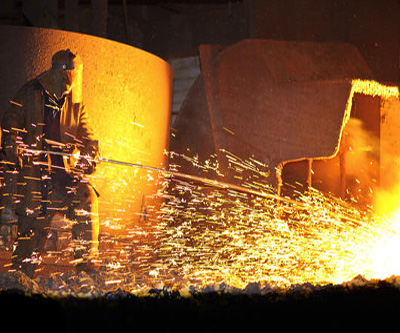
Earlier this month a team of material scientists at Pohang University of Science and Technology in South Korea announced they’ve successfully created a cheap, flexible steel with a strength to weight ratio of today’s best titanium alloys.
The paper published in the journal Nature shows the researchers appear to have overcome the biggest problem with adding a high proportion of aluminum to steel alloys to make it lighter – poor ductility and brittleness. That’s one the reasons the proportion of steel in the automotive and aerospace industries have been steadily dropping,
According to the paper “nickel catalyses the precipitation of nanometre-sized B2 particles (Fe and Al intermetallic compounds) in the face-centred cubic matrix of high-aluminium low-density steel during heat treatment of cold-rolled sheet steel.”
The result is an alloy 13% less dense than traditional steel and harder, but also crucially the new process creates a metal that would bend, not break under pressure.
There are still challenges before it can be mass produced however Popular Mechanics reports steelmakers use “a silicate layer to cover and protect mass-produced steel from oxidation with the air and contamination from the foundry. This silicate can’t be used for Kim’s steel because it has a tendency to react with the cooling aluminum, compromising the final product.”
Nevertheless, Lead researcher Hansoo Kim told Popular Mechanics the method is actually more important than the result. Now that his results are published, he expects scientists to cook up a multitude of new alloys based on the B2-dispersion method.”
Comments
jeremyjanson
“a silicate layer to cover and protect mass-produced steel from
oxidation with the air and contamination from the foundry. This silicate
can’t be used for Kim’s steel because it has a tendency to react with
the cooling aluminum, compromising the final product.”
Roll the steel in a vacuum chamber?